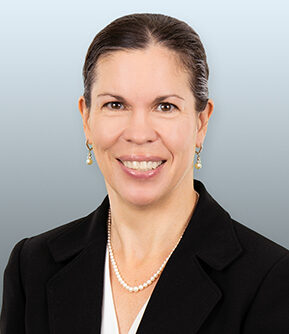The Families First Coronavirus Response Act (H.R. 6201): Key Provisions for Employers
On March 18, 2020, President Trump signed the Families First Coronavirus Response Act. This piece of legislation will extend additional assistance and protections to individuals and businesses affected by the COVID-19 crisis. The following alert provides a brief summary of the key provisions of H.R. 6201 relevant to employers.
Emergency Family and Medical Leave Expansion Act
The new law first includes a temporary expansion of the Family and Medical Leave Act (“FMLA”) through December 31, 2020 to allow FMLA leave (up to 12 weeks) to be used for a qualifying need related to a public health emergency concerning Coronavirus, as declared by federal, state or local authorities.
- A “qualifying need” is limited to circumstances where the employee is unable to work or telework due to the need to care for a child under 18 if the child’s school or child care is closed due to a Coronavirus-related public health emergency.
- Employees are eligible for the leave if they have worked for the employer for at least 30 calendar days. (This is a much broader than the usual eligibility rules for existing forms of FMLA leave.)
Importantly, the expanded FMLA leave entitlement only applies to employers with fewer than 500 employees. The Secretary of Labor has authority to issue regulations to exempt small business with fewer than 50 employees, but they are not yet exempt and should be cognizant of the law’s requirements.
This Coronavirus-related FMLA expansion creates a right to paid leave, unlike existing forms of FMLA leaves, all of which are unpaid.
- If an employee takes leave to care for a child due to a Coronavirus-related school closure, the first 10 days of the leave may be unpaid. The employee may elect (but may not be required) to use accrued vacation or sick leave during this time. After this first 10 days, the employer must provide PAID leave of no less than two-thirds of the employee’s regular rate of pay (as that term is defined by the FLSA for purposes of calculating overtime compensation), not to exceed $200 per day and $10,000 aggregate.
An employee who uses this FMLA leave is entitled to reinstatement to the same or equivalent position UNLESS the employer has fewer than 25 employees, the position held by the employee at the time the leave started no longer exists due to economic conditions or other operating condition caused by the public health emergency, and the employer has tried to restore the employee to an equivalent position. If there is no position available, the employer still must make reasonable effort for one year to contact the employee if an equivalent position becomes available. In addition, the bill excludes employers with fewer than 50 employees in a 75-mile radius from civil FMLA damages in an employee-initiated lawsuit.
Employers of health care providers and emergency responders may elect to exclude such employees from the provisions of this law.
The law also provides that employees subject to multi-employer collective bargaining agreements and employees of employers who pay into multi-employer benefit funds are eligible for these benefits.
The expanded FMLA law takes effect “no later than” 15 days from the date of its enactment.
Paid Sick Leave
Under the new law, employers with fewer than 500 employees must provide employees with two weeks (10 days) of emergency paid sick leave benefits to be used for Coronavirus-related absences.
- Full-time employees are entitled to 80 hours of paid sick leave.
- Part-time employees are entitled to the number of hours that the employee works on average over a two-week period.
- There is no minimum tenure of employment in order to for an employee to be eligible for this paid sick leave benefit.
- The full benefits must be available for immediate use and do not accrue over time based on hours worked.
- Importantly, an employer cannot require employees to exhaust other forms of paid leave before using this new Coronavirus paid leave.
- Additionally, the Coronavirus paid leave is in addition to any paid leave the employer already provides. Thus, even if an employer has a generous paid leave policy, it is not excused in whole or in part from compliance with the new law. The law is only in place until December 31, 2020.
An employee may use paid sick leave if the employee is unable to work for any of the following reasons:
- The employee is subject to a federal, state or local quarantine or isolation order for Coronavirus;
- The employee is advised by a health care provider to self-quarantine due to Coronavirus concerns;
- The employee is experiencing symptoms of Coronavirus and seeking a medical diagnosis;
- The employee is caring for an individual who is under a quarantine or isolation order or has been advised to self-quarantine;
- The employee is caring for a child whose school or child care has been closed due to Coronavirus;
- The employee is experiencing any other substantially similar condition specified by the Secretary of Health and Human Services.
Employees using paid sick leave for purposes (1)-(3) above must be paid their “regular rate of pay” (as defined for purposes of calculating overtime compensation), which cannot be less than the minimum wage in the state or locality where the employee works. Employees using leave for reasons (4)-(6) must be paid 2/3 of these amounts. However, an employer’s obligation to provide paid sick leave is subject to the following limitations: (A) an employee using paid sick leave for reasons (1)-(3) above need not be paid more than $511 per day and/or $5,110 in the aggregate; and (B) an employee using paid sick leave for reasons (4)-(6) above need not be paid more than $200 per day and/or $2,000 in the aggregate. If an employee does not have a set schedule of hours, paid sick leave is based on the average number of hours the employee was scheduled per day over the six-month period prior to the use of the leave. The Secretary of Labor is expected to issue guidelines on calculating paid sick leave pay within 15 days.
The employee’s ability to use paid sick leave for these purposes ceases upon the termination of the qualifying event.
Paid leave provided under this law does not carry over year to year and any unused leave does not need to be paid out on termination of employment.
Employers are required to post a notice in the workplace of paid sick leave rights under the new law. The Secretary of Labor is supposed to publish this notice for employers to use within seven days.
Failure to comply with the paid sick leave law will be deemed a failure to pay minimum wages under the FLSA, and will subject an employer to various penalties.
Payroll Tax Credits for Employers Providing the Paid Leave
Employers who provide paid sick leave or paid family leave to employees for Coronavirus purposes set forth in the law will be entitled to payroll tax credits. The law provides that an employer is entitled to a payroll tax credit for each calendar quarter in an amount equal to 100% of the qualified paid sick leave wages paid by the employer in the quarter, and the amount of qualified family leave wages paid by the employer, not to exceed $200 per day and $10,000 aggregate per employee.
If you have any questions concerning the above provisions of HR 6201 or workplace issues related to COVID-19, please contact Theresa M. Zechman, Lisa Scidurlo or the Stevens & Lee attorney with whom you regularly work.
This News Alert has been prepared for informational purposes only and should not be construed as, and does not constitute, legal advice on any specific matter. For more information, please see the disclaimer.



